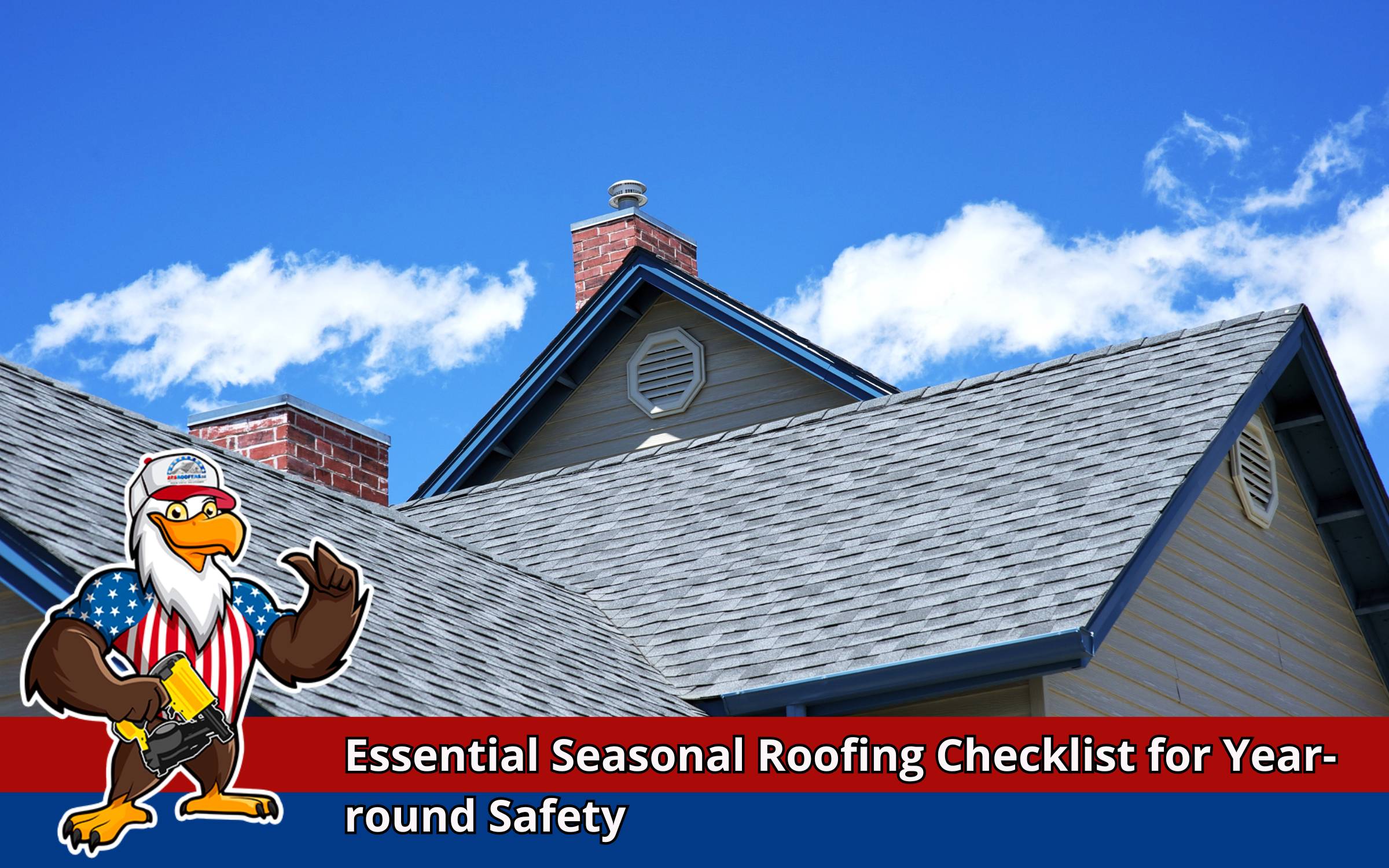
As the seasons change, so do the challenges your roof faces. From the weight of winter snow to the relentless summer sun, your roof is constantly under stress. The unsung hero of your home, your roof shields you from the elements and ensures comfort and safety. Yet, it often remains overlooked until a small issue becomes a costly repair. This is where a seasonal roofing checklist becomes vital. A proactive approach to roof maintenance can save you from unexpected headaches and preserve your investment in the long run. By integrating a seasonal roofing checklist into your routine, you can catch minor issues before they escalate. This ensures security all year for you and your family. In this guide, we will explore practices that keep your roof intact through every season.
Importance of Seasonal Roof Maintenance
Regular roof maintenance during each season plays a pivotal role in protecting your home’s structure. Weather fluctuations expose roofing materials to cycles of expansion and contraction. This can lead to cracks, loose shingles, or water infiltration. Following a seasonal roofing checklist helps identify these issues early, preventing defects from turning into costly repairs. Consistent inspections also uphold warranties that often require documented proof of care. Beyond avoiding expensive fixes, maintenance contributes to energy efficiency and indoor comfort. A sturdy roof enhances curb appeal, an important factor in property value. Ultimately, a structured approach ensures you protect both your investment and the safety of those under your roof.
Spring Roofing Checklist: Post-Winter Inspection
- Remove debris such as twigs, leaves, and residue from valleys and gutters.
- Inspect gutters and downspouts for clogs or sagging sections.
- Examine shingles for cracks, curling, or missing sections.
- Check flashings around chimneys, vents, and skylights for damage.
- Inspect attic insulation and ventilation for mold or daylight leaks.
Addressing these issues early sets the foundation for strong roofing performance through summer heat. If you notice recurring problems, consider reaching out through our Contact page for professional guidance.
Summer Roofing Tips: Protecting Against Heat and UV Damage
- Check shingles for curling, cracked edges, or granule loss.
- Apply reflective coatings to reduce heat absorption.
- Ensure attic ventilation with clear ridge and soffit vents.
- Redistribute or add insulation to maintain indoor comfort.
- Consider solar attic fans for extra protection.
Summer maintenance reduces energy bills and extends roof life. For ongoing care, explore our Services page.
Fall Roof Maintenance: Preparing for Colder Weather
- Clear gutters and downspouts of leaves and pine needles.
- Flush the drainage system to ensure proper flow.
- Trim overhanging branches near the roof.
- Inspect sealants around chimneys and skylights.
- Evaluate attic insulation before freezing temperatures arrive.
Completing these tasks prevents ice dams and prepares your roof for winter storms. A fall inspection ensures safety during colder months.
Winter Roof Safety Measures: Handling Snow and Ice Buildup
Winter introduces heavy snow and ice that can strain your roof. Use a roof rake to safely remove excess snow. Focus on areas near gutters to reduce dam formation. Heat cables may also be installed to promote runoff and prevent refreezing. Inside the attic, seal air leaks to keep consistent temperatures and prevent uneven melting. Monitoring and clearing small drifts promptly ensures long-term safety for your roof and family.
Signs of Roof Damage: What to Look Out For
Early detection prevents minor problems from becoming structural issues. From the ground, use binoculars to inspect shingles for cracks or missing tabs. Inside, watch for water stains on ceilings or damp insulation in the attic. Streaks on shingles suggest algae growth, while rusted flashing indicates corrosion. Observing these signs regularly protects your roofing system and maintains its lifespan.
DIY Roof Inspection Guide: Step-by-Step Process
Before climbing, gather gloves, goggles, a ladder, and non-slip shoes. Start from the ground, then move upward carefully. Inspect shingles, press edges for looseness, and check flashing around vents and skylights. Finish by cleaning gutters and ensuring downspouts are clear. Completing this seasonal roofing checklist empowers homeowners to maintain their property effectively.
Hiring Professional Roofing Services: When to Call in the Experts
DIY inspections are valuable, but some situations require professional help. Steep roofs, major storm damage, or persistent leaks need expert evaluation. Maintenance contracts with licensed roofers include inspections, cleanings, and repairs. Engaging experts guarantees quality, warranty compliance, and peace of mind. Visit our Services page to learn more about professional care.
Roofing Materials Care: Maintaining the Integrity of Your Roof
Each material needs tailored care. Asphalt shingles should be cleaned with mild solutions, not pressure washers. Metal roofs require rust treatment and resealing. Tile or slate roofs must be monitored for cracks, while wood shake needs fire-resistant coating and re-staining. Following manufacturer guidelines ensures long-term durability.
FAQs
What is included in a seasonal roofing checklist?
It includes inspections for shingles, gutters, flashings, attic ventilation, and insulation across all four seasons.
How often should I follow the seasonal roofing checklist?
Perform checks at least once every season to ensure roof safety and performance throughout the year.
Can I perform all roof inspections myself?
Many tasks are DIY-friendly, but steep roofs or major damage require professional expertise for safety and accuracy.
Why is attic ventilation important in a seasonal roofing checklist?
Proper airflow prevents moisture, mold, and uneven temperatures that lead to costly roof issues.
When should I contact professionals instead of using the seasonal roofing checklist alone?
If leaks persist or major damage is visible, call a licensed roofer for inspection and repairs.
Ensuring Year-Round Safety and Security
A complete seasonal roofing checklist empowers you to maintain a durable, leak-resistant roof. Regular inspections each season minimize risks and avoid costly repairs. Combining DIY care with professional support safeguards property value and ensures comfort. For reliable assistance, visit our Contact page to connect with experts today.
